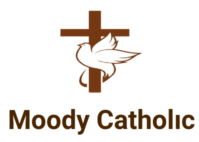The Enduring Legacy of Catholic Monasticism
A Journey Through Time
Catholic monasticism holds a pivotal role in the history of Christianity, offering a unique perspective on the spiritual, cultural, and scholarly development across centuries. From solitary desert hermits to powerful monastic communities, this religious movement has significantly shaped both the church and wider society.
In this article, we delve deep into the origins, evolution, and impact of Catholic monasticism, revealing its enduring significance.
This blog post contains affiliate links. When you click on a link on this page and make a purchase I may earn a small commission, at no additional cost to you. Thank you for your support.
Origins of Monasticism
Monasticism began in the deserts of Egypt and Syria, primarily with the commitment of hermits like St. Anthony the Great, who withdrew from society around 270 AD to seek spiritual depth.
These early monastics were Ascetics, dedicated to combating the spiritual and physical limits of their bodies to form a closer connection with God. Their lifestyle was characterized by prayer, fasting, and labor.

Growth and Spread
By the 4th century, monasticism had taken root within the Christian world. St. Pachomius, the founder of one of the first monastic communities, established rules that would govern communal monastic life, emphasizing obedience, poverty, chastity, and communal living.
This framework was pivotal in shaping the future of monastic communities. Monasticism spread rapidly throughout Eastern and Western Europe, with figures such as St. Benedict of Nursia in Italy influencing Western monasticism profoundly through his “Rule of Benedict.”
This rule became the standard for monastic living in the West, promoting a balanced life of prayer and work.
Contributions to Culture and Education
Monasteries became centers of learning and knowledge preservation during the medieval period. Monks copied and preserved religious manuscripts, including the Bible, and classical works from ancient Greece and Rome, thus playing a crucial role in the intellectual life of the Middle Ages.
Many monasteries ran schools to educate young boys, many of whom would go on to become monks or secular leaders. The dedication to education and preservation of knowledge helped ignite the sparks of the Renaissance.
Social and Economic Impact
Besides their spiritual and educational endeavors, monks also had a significant economic impact. Monastic communities were often self-sufficient, engaged in farming, brewing beer, producing wine, and even advancing agricultural technology. Their role in local economies was substantial, providing employment and stability.
Additionally, monks were often among the first to provide aid in times of famine or disease, bolstering their integral role in society.
Modern Times and Reformation
The structure and role of monastic communities were challenged and transformed by the Protestant Reformation in the 16th century. Many monasteries were dissolved, and their lands confiscated.
However, the Counter-Reformation saw a revival and reform of monastic life within the Catholic Church, with new orders and a renewed focus on education and missionary work across the globe.
Present Day Influence
Today, monasticism continues to attract individuals seeking spiritual depth. Modern monastic communities both maintain traditional practices and adapt to contemporary challenges—fostering spiritual growth, community service, and ecological stewardship.
The monastic commitment to silence and contemplation serves as a spiritual counterbalance in our fast-paced, modern world.
Conclusion
The rich tapestry of Catholic monasticism demonstrates its profound influence on Christianity and the world. Its members have not only committed themselves to lives of prayer and asceticism but have also been at the forefront of cultural preservation, education, and social work.
Monasticism remains a vital and dynamic part of the Catholic heritage, underpinning the faith with centuries of spiritual wisdom and practical service. The history of monasticism is not just a relic of the past but a living, breathing tradition that continues to evolve and adapt in the modern age.
